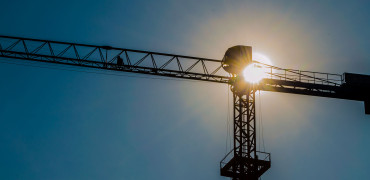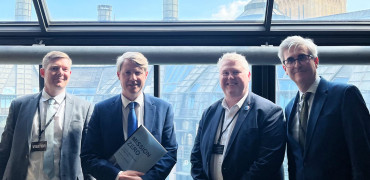On the challenging road to Net Zero buildings, HVAC will take a significant role in achieving energy efficiency and reduced carbon performance. In addition, the ventilation, cooling, heating and hot water systems can help the occupiers of offices, universities - and homes - cope with changes in the UK climate.
But we must design our HVAC systems to achieve these goals, which means taking a long-term view of their impact.
This applies equally to new-build projects and refurbishments.
It’s important to note that clients are leading the charge on these issues.
A balancing act
There is a growing focus on the whole life carbon impact of our buildings. This encompasses both the embodied and operational carbon of a building and its systems.
Specifiers must now balance these elements carefully. For instance, the embodied carbon of a commercial heat pump includes carbon emissions produced during its manufacture, transportation to site and installation.
Its operational carbon depends mainly on its energy use over time – and how the electricity it uses is sourced.
There’s no getting around the fact that this makes specification calculations more difficult. A product may have a high embodied carbon (relative to alternatives) but a lower operational carbon over years of operation.
Ultimately, the client’s long-term objectives for a building (or its refurbishment) will be a crucial influence on these decisions.
Clients are leading the way
And it’s important to note that clients are leading the charge on these issues.
Currently, there is no legal requirement for ‘Net Zero’ buildings in the UK, so there is no standard assessment method. But across diverse sectors such as offices, warehouses and student accommodation, clients demand low-carbon, energy efficient buildings – and the certification to prove what has been achieved.
As a result, in the commercial building sector, groups such as the Net Zero Carbon Buildings Standard are bringing together organisations such as CIBSE, RIBA, RICS, BEIS and UKGBC to establish the processes for achieving Net Zero buildings.
The standard they are working on will cover a range of factors that impact whole life carbon, including upfront embodied carbon and lifecycle embodied carbon, along with other metrics such as space heating and cooling demand and peak load. HVAC systems have a significant impact on many of these factors.
Existing stock
But planning for the long term is more than just a case of meeting as-yet-unwritten standards for Net Zero. We must also ensure our existing building stock is prepared for the impacts of climate change and the UK’s response to it.
For example, the UK is committed to increasing its renewable electricity generation, focusing on wind and nuclear.
And there are signs that electrification is being increasingly adopted in the commercial building sector. New-builds and refurbishment projects are removing gas (or oil) from site, so requirements for space heating and hot water will be met with electric systems.
On-site generation and battery storage are also gaining traction, particularly in sectors such as warehousing.
The solutions are already here
Fortunately, many HVAC products that meet these requirements are already on the market – from commercial heat pumps that produce high-temperature hot water to replace gas or oil boilers to low-GWP air conditioning and heat recovery ventilation systems.
The long-term view of HVAC design and installation is required to help building owners and users get the most from their investments. Buildings of all kinds remain operational for many years, and HVAC systems have a long life. This is increasingly the case as regulations restrict the demolish-and-rebuild approach.
Therefore, we must look beyond the first couple of years of a building’s occupation and consider what happens in five or ten years. As we are all learning when it comes to our environment, the decisions made today have impacts on future generations.
Dave Archer Business Manager - Influenced Sales




